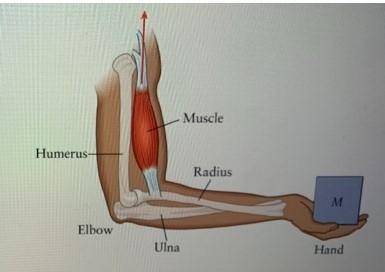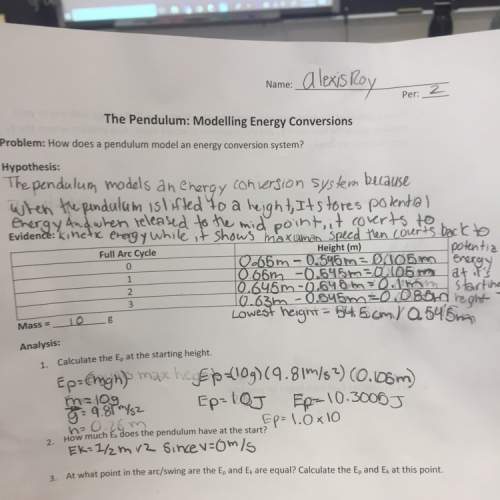
Physics, 03.08.2019 01:30 yrkfred1440
The bones of the forearm (radius and ulna) are hinged to the humerus at the elbow. the biceps muscle connects to the bones of the forearm about 2.152.15 cm beyond the joint. assume the forearm has a mass of 2.452.45 kg and a length of 0.4650.465 m. when the humerus and the biceps are nearly vertical and the forearm is horizontal, if a person wishes to hold an object of mass 6.556.55 kg so that her forearm remains motionless, what is the force exerted by the biceps muscle?

Answers: 3
Another question on Physics

Physics, 21.06.2019 22:30
Aforce of 200 n is applied to an input piston of cross-sectional area 2 sq. cm pushing it downward 2.8 cm. how far does the output piston of cross-sectional area 12 sq. cm move upward? show all work.
Answers: 1

Physics, 22.06.2019 00:30
Which of the following elements is in the same period as phosphorus? a. carbon c. nitrogen b. magnesium d. oxygen select the best answer from the choices provided a b c d
Answers: 1

Physics, 22.06.2019 05:40
The difference between a red shift and a blue shift has to do with wavelength frequency. t or f
Answers: 1

Physics, 22.06.2019 06:40
Light traveling in a medium with a refractive index 1.19 is incident on a plate of another medium with index of refraction 1.79. at what angle of incidence is the reflected light fully polarized?
Answers: 2
You know the right answer?
The bones of the forearm (radius and ulna) are hinged to the humerus at the elbow. the biceps muscle...
Questions

Biology, 14.09.2021 07:10


History, 14.09.2021 07:10

Chemistry, 14.09.2021 07:10

English, 14.09.2021 07:10


Mathematics, 14.09.2021 07:10

Chemistry, 14.09.2021 07:10

Physics, 14.09.2021 07:10





Chemistry, 14.09.2021 07:20




Chemistry, 14.09.2021 07:20


 = 1647.92 N
= 1647.92 N



